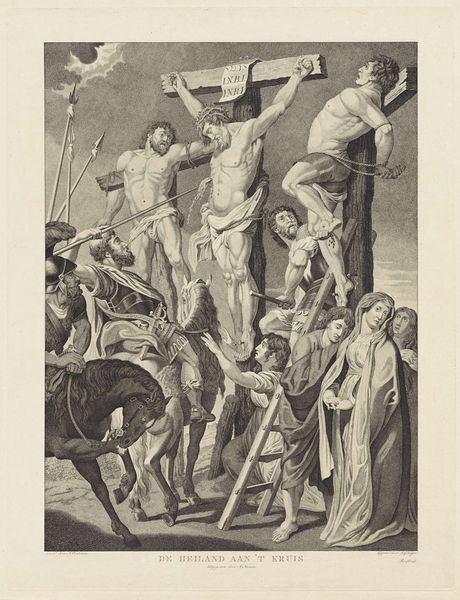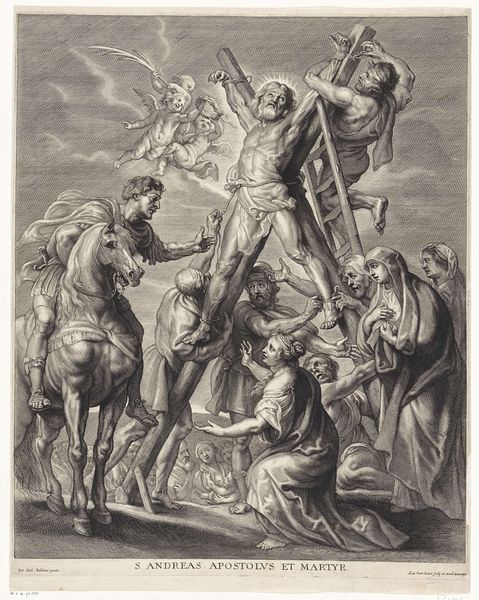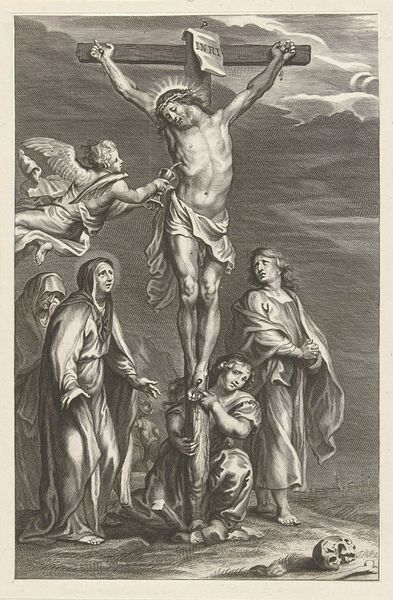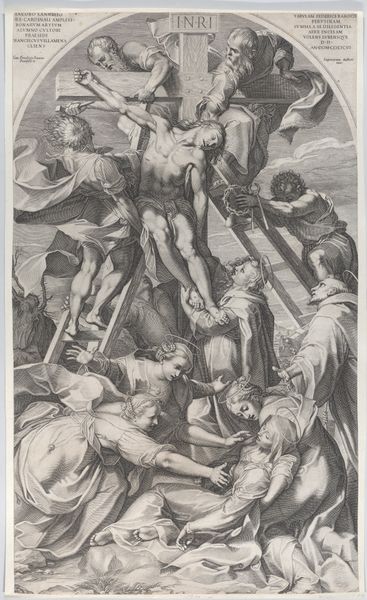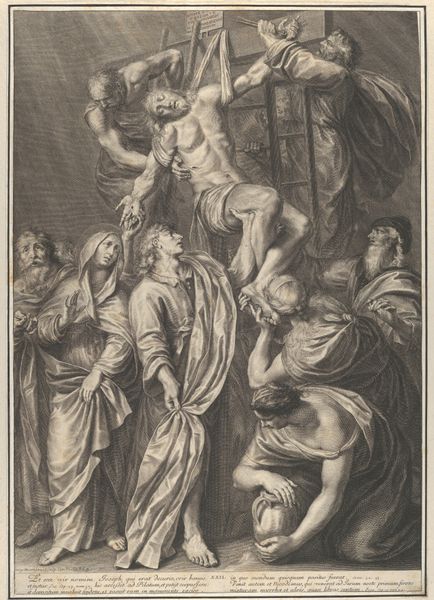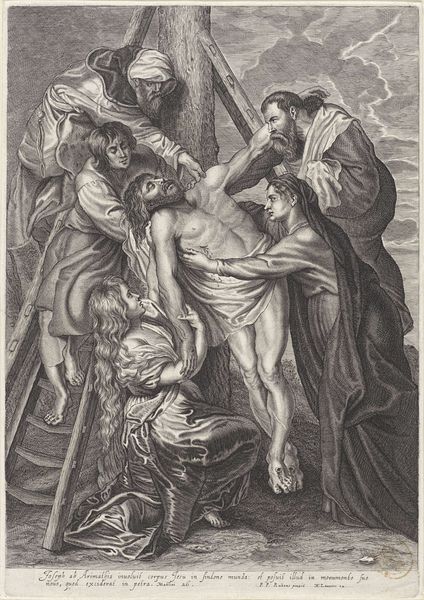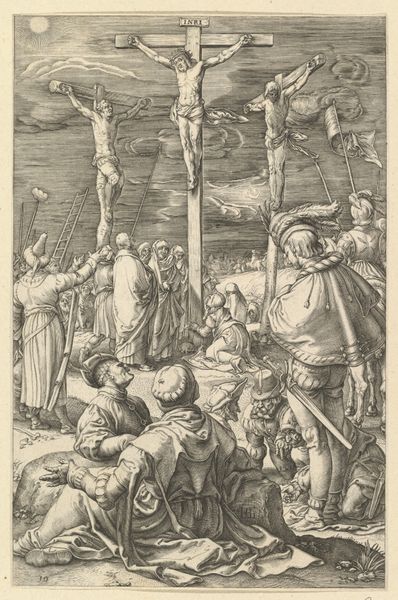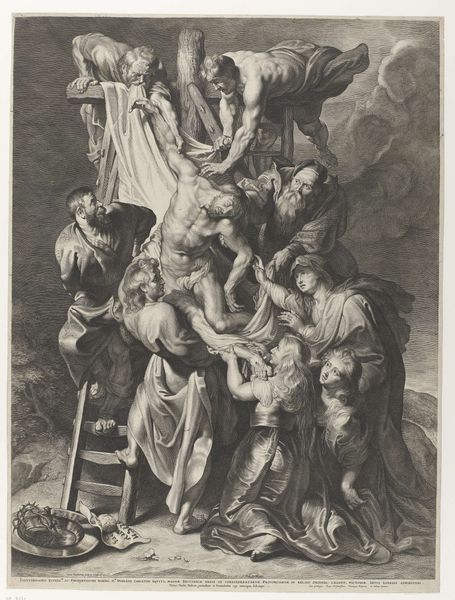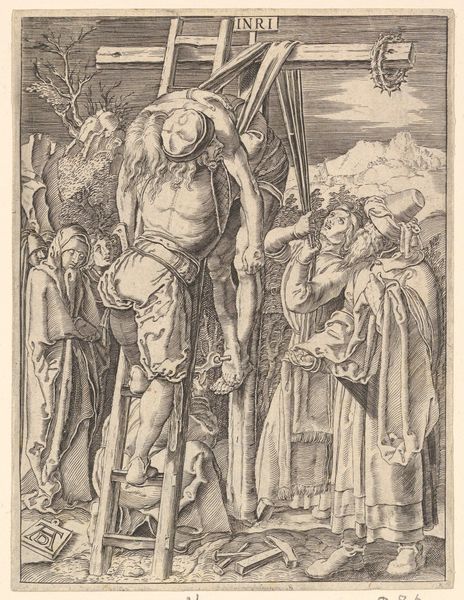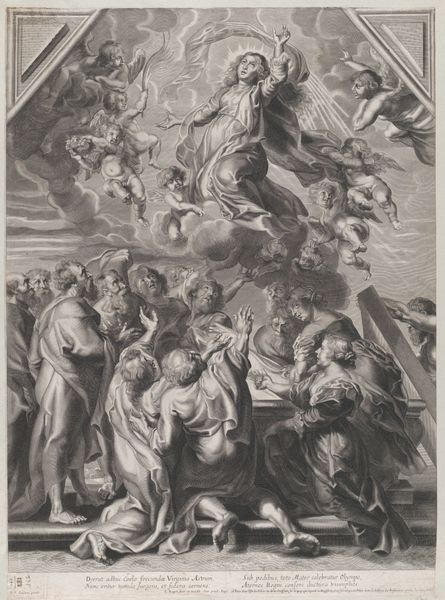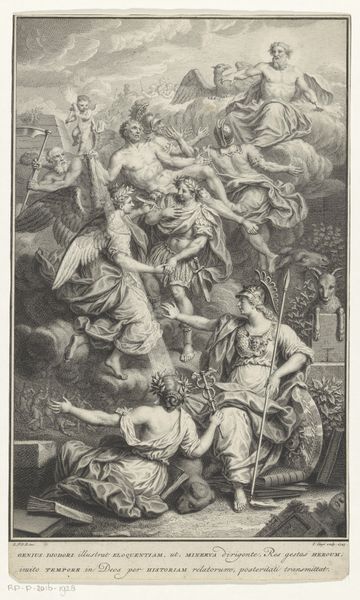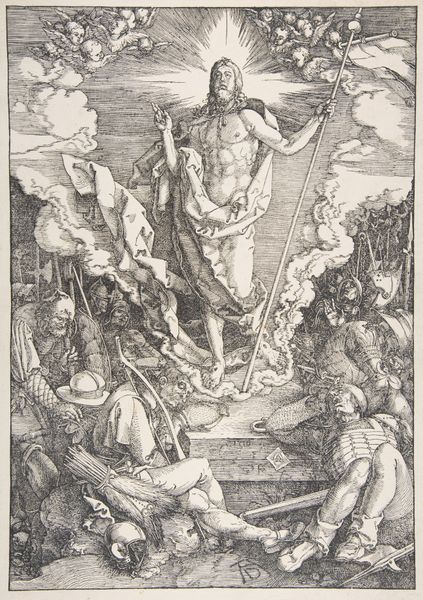
drawing, print, paper, engraving
#
pencil drawn
#
drawing
#
toned paper
#
light pencil work
# print
#
pencil sketch
#
charcoal drawing
#
paper
#
charcoal art
#
pencil drawing
#
portrait drawing
#
pencil work
#
engraving
#
pencil art
Dimensions: 590 × 430 mm (plate); 620 × 450 mm (sheet)
Copyright: Public Domain
Editor: Here we have "The Crucifixion (Coup de Lance)", an engraving from 1631 by Boëtius Adamsz. Bolswert. There’s so much drama packed into this print, almost a theatrical feel, but also a very somber mood. How do you interpret this work from a historical perspective? Curator: It’s vital to understand this piece within its Counter-Reformation context. The intense emotionality, the almost grotesque realism…it's all deliberate. The church used such imagery to inspire piety, obedience, and, frankly, fear, in the viewer. Think about the function of public art in shaping belief. Editor: So, it's propaganda, in a way? Curator: Well, “propaganda” might be too harsh. It was more about reaffirming doctrine and countering Protestant critiques. Prints like this would have circulated widely, disseminating very specific messages to a broad audience, often one that was illiterate. Look at the active participants versus the grieving followers at the bottom; what’s the institution trying to say through these different roles? Editor: I guess the active figures show resistance towards faith and that the religious group wants you to relate with Mary as part of a faithful community. Is that a message that you believe translated easily to people? Curator: Yes, in a society where religion was interwoven with every aspect of life, this print wasn't just an image; it was a potent symbol of social control and spiritual guidance. Think about how its display would contribute to that authority. Editor: It's unsettling to see it framed that way, thinking about art as such a direct tool of power, and also thought-provoking about how that impacts religious beliefs to this day. Curator: Precisely. Reflecting on the public role of art invites these very challenging considerations.
Comments
No comments
Be the first to comment and join the conversation on the ultimate creative platform.

